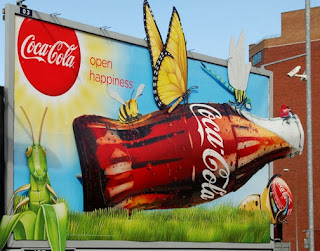 Outdoor agency Rapport have commissioned a comprehensive, large-scale study into the "fragmented media choice" provided by the out-of-home advertising environment, drawing data from both consumers and media experts and resulting in the creation of an intelligent planning tool named
Outdoor agency Rapport have commissioned a comprehensive, large-scale study into the "fragmented media choice" provided by the out-of-home advertising environment, drawing data from both consumers and media experts and resulting in the creation of an intelligent planning tool named Alloy.
Orchestrating their research via two different methods, Rapport asked 2,000 consumers to name the "most important factors when choosing a product or brand" and also to list the media channels that "most effectively communicate these factors". Meanwhile, a 30-strong team of OOH experts were asked to outline tasks that can be well delivered by each outdoor format, and were also required to assess the performance of digital OOH in comparison to static posters.
This research incorporated 45 advertising platforms across14 environments, with a focus placed on 8 key marketing tasks and how out-of-home can execute them. These include: amplifying awareness of the brand, demonstrating the brand's stature, generating a presence for the brand, communicating brand information, encouraging further exploration of the brand, directing the consumer towards a store/website, initiating the sharing of brand content, and direct interaction between the brand and the consumer.
As a result, Alloy works by supplying the advertiser with a series of 40 interactive questions, allowing the tool to establish campaign objectives, identify the most appropriate out-of-home solutions for these objectives, and optimise budget across these solutions.
The collection of information reveals invaluable media planning information, for example, bars are the number one place that consumers choose to share content, followed by the cinema and then sports or music events.
Tube and rail commuters are, apparently, the biggest entertainment seekers, while bar customers are in the best mood. Sports fans and airport travellers have the highest levels of excitement, whereas gym users are the most eager to learn.






















